#nuclear testing
Explore tagged Tumblr posts
Photo

“ A group of women outside the Russian Mission to the United Nations in New York City protest the testing of nuclear arms on Nov. 1, 1961.”
552 notes
·
View notes
Text
135 notes
·
View notes
Text
Aliens upon learning that we were not actually in a nuclear war: Ok? I guess testing a weapon makes sense. But why did you need to test the same weapon 2058 times?
Human: 2056
Alien: *visible fear as the realization kicks in and they question which ones weren’t tests
890 notes
·
View notes
Text
By Emily Strasser | August 9, 2023
At the theater where I saw Oppenheimer on opening night, there was a handmade photo booth featuring a pink backdrop, “Barbenheimer” in black letters, and a “bomb” made of an exercise ball wrapped in hoses. I want to tell you that I flinched, but I laughed and snapped a photo. It took a beat before I became horrified—by myself and the prop. Today is the 78th anniversary of the bombing of Nagasaki, which killed up to 70,000 people and came only three days after the bombing of Hiroshima that killed as many as 140,000 people. Yet still we make jokes of these weapons of genocide.
Oppenheimer does not make a joke of nuclear weapons, but by erasing the specific victims of the bombings, it repeats a sanitized treatment of the bomb that enables a lighthearted attitude and limits the power of the film’s message. I know this sanitized version intimately, because my grandfather spent his career building nuclear weapons in Oak Ridge, Tennessee, the site of uranium enrichment for the Hiroshima bomb. My grandfather died before I was born, and though there were photographs of mushroom clouds from nuclear tests hanging on my grandmother’s walls, we never discussed Hiroshima, Nagasaki, or the fact that Oak Ridge, still an active nuclear weapons production site, is also a 35,000-acre Superfund site. At the Catholic church in town, a pious Mary stands atop an orb bearing the overlapping ovals symbolizing the atom, and until it closed a few years ago, a local restaurant displayed a sign with a mushroom cloud bursting out of a mug of beer.
Oppenheimer does not show a single image of Hiroshima or Nagasaki. Instead, it recreates the horror through Oppenheimer’s imagination, when, during a congratulatory speech to the scientists of Los Alamos after the bombing of Hiroshima, the sound of the hysterically cheering crowd goes silent, the room flashes bright, and tatters of skin peel from the face of a white woman in the audience. The scene is powerful and unsettling, and, arguably, avoids sensationalizing the atrocity by not depicting the victims outright. But it also plays into a problematic pattern of whitewashing both the history and threat of nuclear war by appropriating the trauma of the Japanese victims to incite fear about possible future violence upon white bodies. An example of this pattern is a 1948 cover of John Hersey’s Hiroshima, which featured a white couple fleeing a city beneath a glowing orange sky, even though the book itself brought the visceral human suffering to American readers through the eyes of six actual survivors of the bombing.
The Oppenheimer film also neglects the impacts of fallout from nuclear testing, including from the Trinity test depicted in the film; the harm to the health of blue-collar production workers exposed to toxic and radiological materials; and the contamination of Oak Ridge and other production sites. Instead, the impressive pyrotechnics of the Trinity test, images of missile trails descending through clouds toward a doomed planet, and Earth-consuming fireballs interspersed with digital renderings of a quantum universe of swirling stars and atoms, elevate the bomb to the realm of the sublime—terrible, yes, but also awesome.
A compartmentalized project. The origins of this treatment can be traced to the Manhattan Project, when scientists called the bomb by the euphemistic code word “gadget” and the security policy known as compartmentalization limited workers’ knowledge of the project to the minimum necessary to complete their tasks. This policy helped to dilute responsibility and quash moral debates and dissent. Throughout the film, we see Oppenheimer move from resisting compartmentalization to accepting it. When asked by another scientist about his stance on a petition against dropping the bomb on Japan, he responds that the builders of the bomb do not have “any more right or responsibility” than anyone else to determine how it will be used, despite the fact that the scientists were among the few who even knew of its existence.
Due to compartmentalization, the vast majority of the approximately half-million Manhattan Project workers, like my grandfather, could not have signed the petition because they did not know what they were building until Truman announced the bombing of Hiroshima. Afterward, press restrictions limited coverage of the humanitarian impacts, giving the false impression that the bombings had targeted major military and industrial sites—and eliding the vast civilian toll and the novel horrors of radiation. Photographs and films of the aftermath, shot by Japanese journalists and American military, were classified and suppressed in the United States and occupied Japan.
The limit of theory. Not only is it dishonest and harmful to erase the suffering of the real victims of the bomb, but doing so moves the bomb into the realm of the theoretical and abstract. One recurring theme of the film is the limit of theory. Oppenheimer was a brilliant theorist but a haphazard experimentalist. A close friend and fellow scientist questions whether he’ll be able to pull off this massive, high-stakes project of applied theory. Just before the detonation of the Trinity test bomb, General Leslie Groves, the military head of the project, asks Oppenheimer about a joking bet overheard among the scientists regarding the possibility that the explosion would ignite the atmosphere and destroy the world. Oppenheimer assures Groves that they have done the math and the possibility is “near zero.” “Near zero?” Groves asks, alarmed. “What do you want from theory alone?” responds Oppenheimer.
Can the theoretical motivate humanity to action?
One telling scene shows Oppenheimer at a lecture on the impacts of the bomb. We hear the speaker describe how dark stripes on victims’ clothing were burned onto their skin, but the camera remains on Oppenheimer’s face. He looks at the screen, gaunt and glassy-eyed, for a few moments, before turning away. Americans are still looking away. As a country, we’ve succumbed to “psychic numbing,” as Robert Jay Lifton and Greg Mitchell call it in their book Hiroshima in America, which leads to general apathy about nuclear weapons—and pink mushroom clouds and bomb props for selfies.
On this anniversary of Nagasaki, the world stands on a precipice, closer than ever to nuclear midnight. The nine nuclear-armed states collectively possess more than 12,500 warheads; the more than 9,500 nuclear weapons available for use in military stockpiles have the combined power of more than 135,000 Hiroshima-sized bombs.
If Oppenheimer motivates conversation, activism, and policy shifts in support of nuclear abolition, that’s a good thing. But by relegating the bomb to abstracted images removed from actual humanitarian consequences, the film leaves the weapon in the realm of the theoretical. And as Oppenheimer says in the film, “theory will only take you so far.” Today, it’s vital that we understand the devastating impacts that nuclear weapons have had and continue to have on real victims of their production, testing, and wartime use. Our survival may depend on it.
81 notes
·
View notes
Text
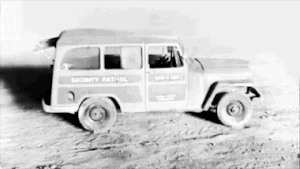
#nuclear explosion#weapons of mass destruction#mass destruction#apocalyptic#mushroom cloud#destruction#devastation#Air Displacement#gif#atomic bomb#nuclear testing
86 notes
·
View notes
Text

Eddo Hartmann. The Sacrifice Zone. The Polygon, Kazakhstan, which was once home to the Soviet Union’s nuclear testing facilities.
#Eddo Hartmann#Kazakhstan#The Polygon#Sony World Photography awards#nuclear testing#nuclear#fallout#nuclear fallout
22 notes
·
View notes
Text

The House in the Middle (1954)
#the house in the middle#cold war#short film#civil defense#1950s#nuclear testing#gifs#movie gifs#tcm underground gifs#fire#burning
10 notes
·
View notes
Text

How Vegas learned to stop worrying and love the Bomb!
🎰☢️🎰
#history#las vegas#nevada#atomic bomb#fallout#american history#new vegas#1950s#1960s#atomic age#cold war history#atomic tourism#atomic cocktail#nuclear testing#united states#video game history#miss atomic bomb#fallout tv show#sin city#radiation#american west#tourisim#mushroom cloud#american culture#cold war#dawn bomb parties#nickys facts
15 notes
·
View notes
Note
put her in the bikini atoll nuclear testing site

ragatha in bikini atoll nuclear testing site
#tadc#tadc ragatha#the amazing digital circus#the amazing digital circus ragatha#ragatha#amazing digital circus#bikini atoll nuclear testing site#bikini atoll#nuclear testing#nuclear testing site
23 notes
·
View notes
Text
18 notes
·
View notes
Text

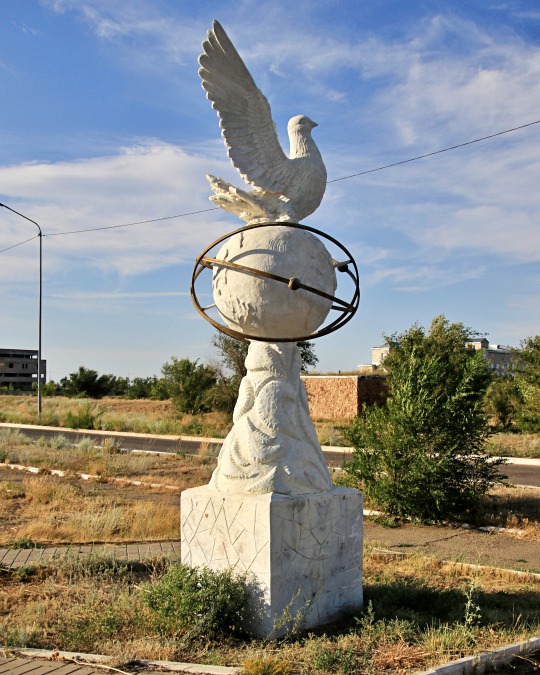
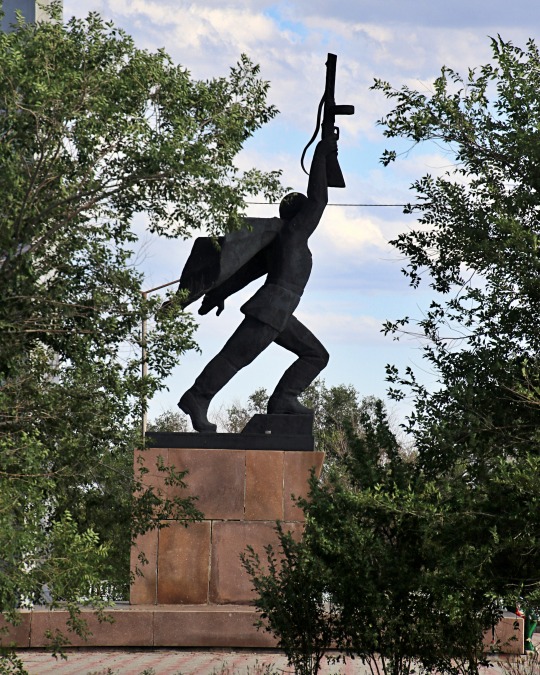


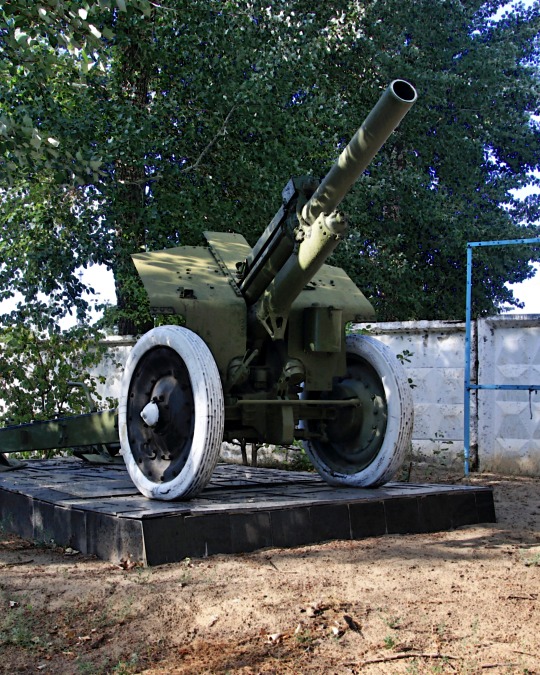
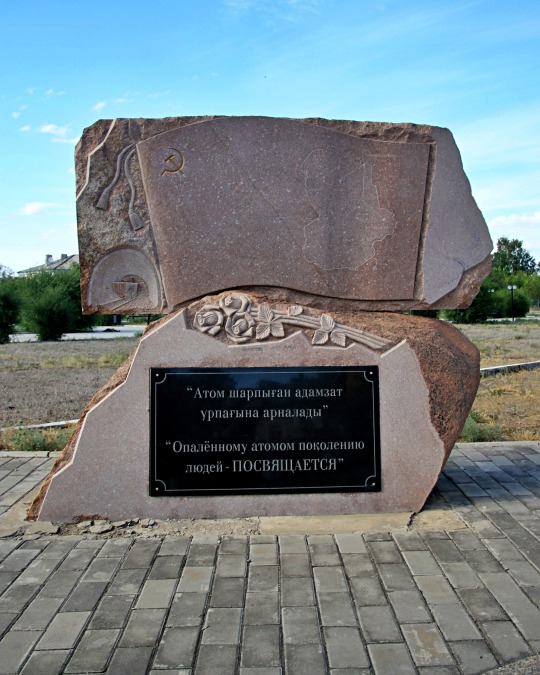
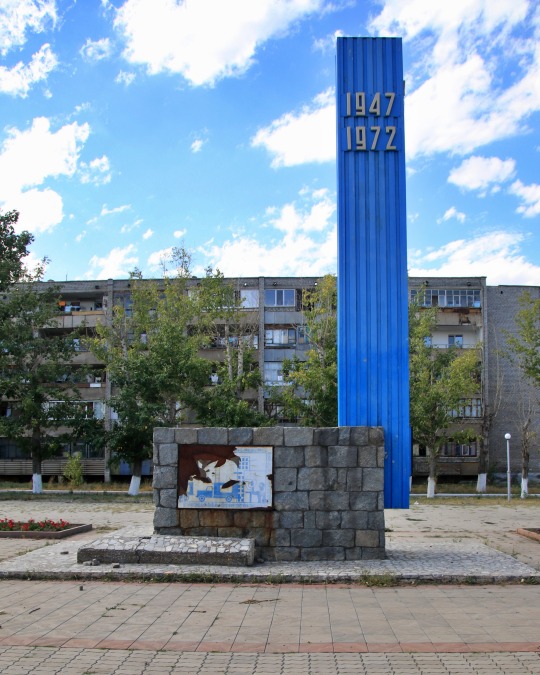


post-soviet town Kurchatov ( Kazakhstan ) - the former operations center for the adjoining Semipalatinsk Nuclear Test Site
#travelphotography#photooftheday#adventure#aroundtheworld#landscape#monuments#kazakhstan#kurchatov#soviet union#soviet art#soviet aesthetic#atom bomb#nuclear testing#ussr#explore#travel#history daily#kazakhstantravel#pickoftheday#semipalatinsktestsite#nuclear bomb#nature#cccp#atom
13 notes
·
View notes
Text
By Susan Montoya Bryan
LOS ALAMOS, N.M. — The movie about a man who changed the course of the world’s history by shepherding the development of the first atomic bomb is expected to be a blockbuster, dramatic and full of suspense.
On the sidelines will be a community downwind from the testing site in the southern New Mexico desert, the impacts of which the U.S. government never has fully acknowledged. The movie on the life of scientist J. Robert Oppenheimer and the top-secret work of the Manhattan Project sheds no light on those residents’ pain.
“They’ll never reflect on the fact that New Mexicans gave their lives. They did the dirtiest of jobs. They invaded our lives and our lands and then they left,” Tina Cordova, a cancer survivor and founder of a group of New Mexico downwinders, said of the scientists and military officials who established a secret city in Los Alamos during the 1940s and tested their work at the Trinity Site some 200 miles away.
Cordova’s group, the Tularosa Basin Downwinders Consortium, has been working with the Union of Concerned Scientists and others for years to bring attention to what the Manhattan Project did to people in New Mexico.
While film critics celebrate “Oppenheimer” and officials in Los Alamos prepare for the spotlight to be on their town, downwinders remain frustrated with the U.S. government — and now movie producers — for not recognizing their plight.
Advocates held vigils Saturday on the 78th anniversary of the Trinity Test in New Mexico and in New York City, where director Christopher Nolan and others participated in a panel discussion following a special screening of the film.

Nolan has called the Trinity Test an extraordinary moment in human history.
“I wanted to take the audience into that room and be there for when that button is pushed and really fully bring the audience to this moment in time,” he said in a clip being used by Universal Studios to promote the film.
The movie is based on Kai Bird and Martin J. Sherwin’s Pulitzer Prize-winning “American Prometheus: The Triumph and Tragedy of J. Robert Oppenheimer.” Nolan has said Oppenheimer’s story is both a dream and a nightmare.
Lilly Adams, a senior outreach coordinator with the Union of Concerned Scientists, participated in the New York vigil and said it was meant to show support for New Mexicans who have been affected.
“The human cost of Oppenheimer’s Trinity Test, and all nuclear weapons activities, is a crucial part of the conversation around U.S. nuclear legacy,” she said in an email. “We have to reckon with this human cost to fully understand Oppenheimer’s legacy and the harm caused by nuclear weapons.”
In developing and testing nuclear weapons, Adams said the U.S. government effectively “poisoned its own people, many of whom are still waiting for recognition and justice.”
Adams and others have said they hope that those involved in making “Oppenheimer” help raise awareness about the downwinders, who have not been added to the list of those covered by the federal government’s compensation program for people exposed to radiation.
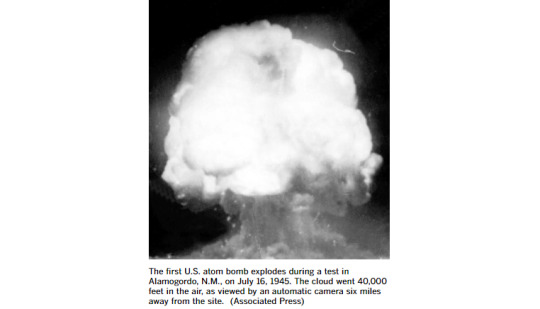
Government officials chose the Trinity Test Site because it was remote and flat, with predictable winds. Due to the secret nature of the project, residents in surrounding areas were not warned.
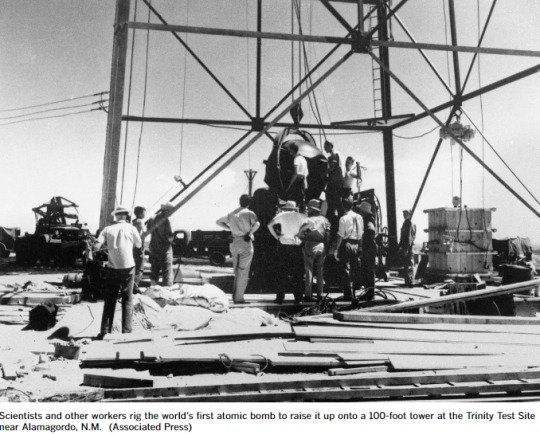
The Tularosa Basin was home to a rural population that lived off the land by raising livestock and tending to gardens and farms. They drew water from cisterns and holding ponds. They had no idea that the fine ash that settled on everything in the days following the explosion was from the world’s first atomic blast.
The government initially tried to hide it, saying that an explosion at a munitions dump caused the rumble and bright light, which could be seen more than 160 miles away.
It wasn’t until the U.S. dropped bombs on Japan weeks later that New Mexico residents realized what they had witnessed.
According to the Manhattan Project National Historical Park, large amounts of radiation shot up into the atmosphere and fallout descended over an area about 250 miles long and 200 miles (322 kilometers) wide. Scientists tracked part of the fallout pattern as far as the Atlantic Ocean, but the greatest concentration settled about 30 miles from the test site.
For Cordova and younger generations who are dealing with cancer, the lack of acknowledgment by the government and those involved with the film is inexcusable.
“We were left here to live with the consequences,” Cordova said. “And they’ll over-glorify the science and the scientists and make no mention of us. And you know what? Shame on them.”
32 notes
·
View notes
Text

youtube
#podcasts#history#the cold war#vienna summit#john f kennedy#nikita khrushchev#easing of tensions#informal talks#expressing views#nato#berlin crisis#two months before the berlin wall goes up#berlin wall#the laos situation#north vietnam#communist insurgency#nuclear testing#nuclear proliferation#keeping open the channels of communication between the great powers#to talk as people#goodnight
3 notes
·
View notes
Text
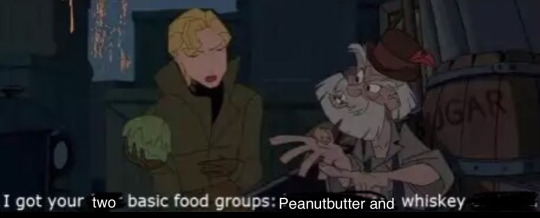

Y’all ever just think about how Oppenheimer used to just fuck off into the desert for weeks on end with basically no food and now Vegas is huge and is draining the Colorado river dry?
#oppenheimer#robert oppenheimer#nuclear testing#oppenheimer 2023#the Colorado river#las Vegas#lake mead
49 notes
·
View notes
Text
William E. Stafford

2 notes
·
View notes
